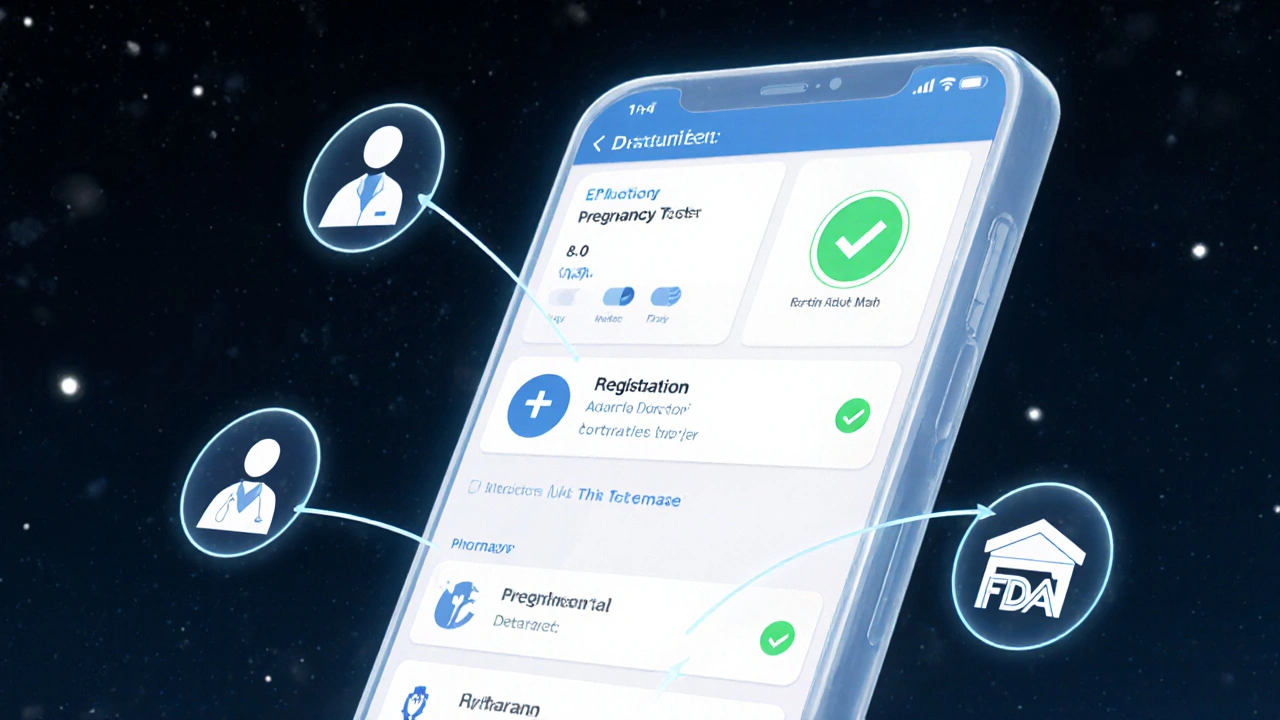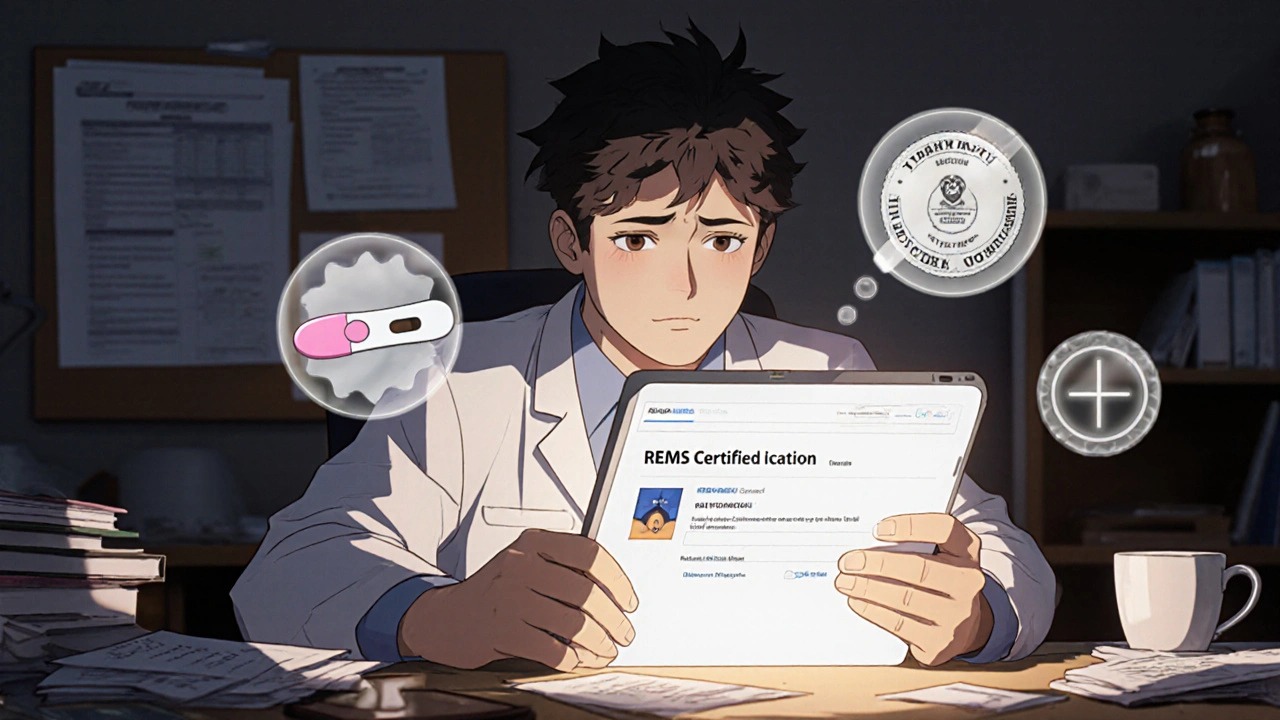Imagine being prescribed a life-saving drug, but your pharmacy won’t fill it because your doctor hasn’t completed a special certification. Or worse-you get the medicine, but no one told you about the serious risks, and now you’re in the hospital. This isn’t fiction. It’s the reality for thousands of patients taking high-risk medications in the U.S. That’s where REMS programs come in.
What Exactly Are REMS Programs?
REMS stands for Risk Evaluation and Mitigation Strategies. These are mandatory safety plans required by the U.S. Food and Drug Administration (FDA) for certain prescription drugs that carry serious, potentially life-threatening risks. The goal isn’t to block access-it’s to make sure patients can get the medicine they need, but only when the benefits clearly outweigh the dangers. The FDA first got the legal power to require REMS in 2007 under the Food and Drug Administration Amendments Act. Before that, safety controls were patchy. For example, isotretinoin (Accutane), a powerful acne drug that can cause severe birth defects, had a voluntary program in the 1990s. It didn’t work well enough. So in 2007, the FDA made these safety rules official, binding, and enforceable. Today, about 120 REMS programs are active, covering 185 different drugs. That’s roughly 5.7% of all prescription medications on the U.S. market. Most of them are for cancer treatments, multiple sclerosis, and rare blood disorders. These aren’t minor side effects we’re talking about. We’re talking about organ failure, birth defects, sudden death, and rare but deadly infections.The Four Key Parts of a REMS Program
Not every REMS is the same. But they all have at least one of these four core components:- Medication Guide - A printed handout given to patients with clear warnings about serious side effects. About 78% of REMS programs require this. It’s the most common tool.
- Communication Plan - A way to get safety info to doctors and pharmacists. This might be a letter, an email alert, or training materials. Around 62% of REMS include this.
- Elements to Assure Safe Use (ETASU) - The strictest layer. Only about 45% of REMS have this, but they’re the ones that cause the most headaches. ETASU can require prescribers to be certified, pharmacies to be specially licensed, patients to enroll in a registry, or even force the drug to be given only in a hospital.
- Implementation System - The behind-the-scenes tech and paperwork that makes it all work. This includes online portals, certification forms, and tracking systems.
For example, the REMS for lenalidomide (Revlimid), a drug used to treat multiple myeloma, requires:
- Doctors to complete a 45-minute online certification
- Patients to sign a consent form and enroll in a pregnancy registry
- Pharmacists to verify the doctor’s certification before dispensing
- Monthly pregnancy tests for women of childbearing age
That’s not just paperwork. It’s time. And for oncology clinics, that’s 5+ hours a week just managing REMS for one drug.
Who’s Responsible for Making REMS Work?
The drug manufacturer has the biggest job. They have to design the REMS, pay for it, train staff, and submit regular reports to the FDA showing it’s working. The average cost? $2.7 million per program, every year. That’s why some companies fight REMS-they add millions to the price tag. But it’s not just the drugmaker. Everyone plays a role:- Doctors - Must get certified. Some REMS require re-certification every year. The average certification takes 45 minutes. For a doctor managing 10 patients on REMS drugs? That’s 7.5 hours a month just for paperwork.
- Pharmacists - Can’t fill the prescription without checking the doctor’s certification status, verifying patient enrollment, and sometimes confirming the drug is being given in the right setting. One pharmacist on Reddit said the Entyvio REMS adds 15-20 minutes per prescription just for portal checks.
- Specialty Pharmacies - Nearly 9 out of 10 REMS drugs must be dispensed through specialty pharmacies. These aren’t your local CVS. They’re high-touch, high-cost providers that handle complex logistics, temperature control, and patient follow-up.
- Patients - Must understand the risks, sign forms, get tested, and show up for monitoring. Many don’t. A GoodRx survey found 42% of patients had treatment delays because they didn’t meet REMS requirements.
The FDA doesn’t just hand out REMS and walk away. They monitor them. If a program isn’t working-if it’s causing delays without improving safety-they can remove it. Only three REMS have been dropped since 2007. The last one, for Zeposia (a multiple sclerosis drug), was removed in March 2023 after the FDA decided the risks were manageable without the extra controls.

The Hidden Costs: Delays, Confusion, and Access Barriers
REMS programs save lives. But they also create real problems. Generic drug makers say REMS are being used to block competition. A 2024 study in Health Affairs found that 78% of generic manufacturers faced delays of over 14 months just to get samples of the brand-name drug to test their version. Why? Because the brand company controls access to the drug under REMS rules. Without access, generics can’t prove they’re safe. And without generics, prices stay high. Patients face delays too. One woman with rheumatoid arthritis waited six weeks for her drug because her doctor’s certification had expired and the REMS portal was down. Another, a veteran with hepatitis C, couldn’t get his medication because his local pharmacy wasn’t certified to dispense it-so he had to drive 90 miles. And language? Big issue. Most Medication Guides are only in English. For non-English speakers, the risks aren’t just medical-they’re legal. If a patient doesn’t understand the warnings, who’s at fault?What’s Changing? The Push for REMS Modernization
The FDA knows REMS are broken in places. In 2023, they launched the REMS Modernization Initiative. Here’s what’s coming:- One portal, not 120 - Right now, doctors and pharmacists have to log into different systems for every REMS drug. By 2025, the FDA plans to launch a single dashboard to manage all certifications and verifications.
- Standardized forms - No more 10 different consent forms for different drugs. One template, one system.
- Digital tracking - Instead of paper registries, use EHRs and apps to automatically track pregnancy tests, lab results, and patient compliance.
- Faster generic access - The 21st Century Cures Act Reauthorization (2022) requires the FDA to create a new process so generic companies can get drug samples within 90 days. That’s a big deal.
Experts predict REMS will soon use real-world data-like hospital admission rates and lab results-to adjust safety rules automatically. If a drug’s risk drops over time, the REMS should shrink. If it spikes, the controls should tighten. That’s the future: smarter, not just stricter.

Why REMS Still Matter
Yes, REMS are messy. Yes, they slow things down. But here’s the truth: without them, some drugs would never have been approved. Thalidomide, for example, caused thousands of birth defects in the 1950s. Today, it’s used to treat leprosy and multiple myeloma-but only under one of the strictest REMS programs. No one can get it without proving they won’t get pregnant. And it works. Birth defects from thalidomide in the U.S. are now almost zero. The FDA estimates REMS programs prevent $8.4 billion in healthcare costs each year by stopping serious side effects. That’s more than 7 times the $1.2 billion they cost to run. It’s not about control. It’s about trust. Patients need to know their doctors and pharmacists are doing everything possible to keep them safe. REMS, flaws and all, are the system trying to earn that trust.What You Should Do If You’re Prescribed a REMS Drug
If your doctor says you need a drug with a REMS program:- Ask: “What does this REMS mean for me?” Don’t just accept “It’s required.”
- Find out if you need to enroll in a registry, get tested, or see a specialist.
- Confirm your pharmacy is certified to dispense it. If they say no, ask for a referral.
- Keep copies of all signed forms and test results. You might need them later.
- If you’re delayed, call the drugmaker’s REMS support line. Most have one.
REMS isn’t perfect. But it’s the best system we have to balance risk and access. The goal isn’t to make life harder-it’s to make sure you don’t pay the ultimate price for a treatment that’s supposed to save you.
What drugs have REMS programs?
About 185 drugs in the U.S. have active REMS programs, mostly in oncology, multiple sclerosis, and rare blood disorders. Examples include lenalidomide (Revlimid), pomalidomide (Pomalyst), thalidomide, alemtuzumab (Lemtrada), and natalizumab (Tysabri). The FDA maintains a public list on its REMS@FDA website.
Can I avoid a REMS program?
No. If your doctor prescribes a drug with a REMS, you must follow all requirements to get it. There are no exceptions. However, your doctor may be able to switch you to a similar drug without REMS if your condition allows it. Always ask.
Do REMS programs make drugs more expensive?
Yes, indirectly. Drugmakers spend an average of $2.7 million per year per REMS program on staff, tech, and compliance. These costs are passed on to patients and insurers. REMS also delay generic competition, keeping brand-name prices high for longer.
How do I know if my medication has a REMS?
Check the Medication Guide that comes with your prescription-it will say if REMS applies. You can also ask your pharmacist or look up the drug on the FDA’s REMS@FDA website. If your doctor or pharmacy mentions certification or enrollment, it’s likely under REMS.
Why do pharmacists take so long to fill REMS prescriptions?
Because they have to verify multiple things: Is the prescriber certified? Is the patient enrolled? Are lab results up to date? Is the pharmacy licensed? Some REMS require checking online portals, calling the manufacturer, or confirming delivery settings. This adds 10-20 minutes per prescription.


Graham Holborn
Hi, I'm Caspian Osterholm, a pharmaceutical expert with a passion for writing about medication and diseases. Through years of experience in the industry, I've developed a comprehensive understanding of various medications and their impact on health. I enjoy researching and sharing my knowledge with others, aiming to inform and educate people on the importance of pharmaceuticals in managing and treating different health conditions. My ultimate goal is to help people make informed decisions about their health and well-being.